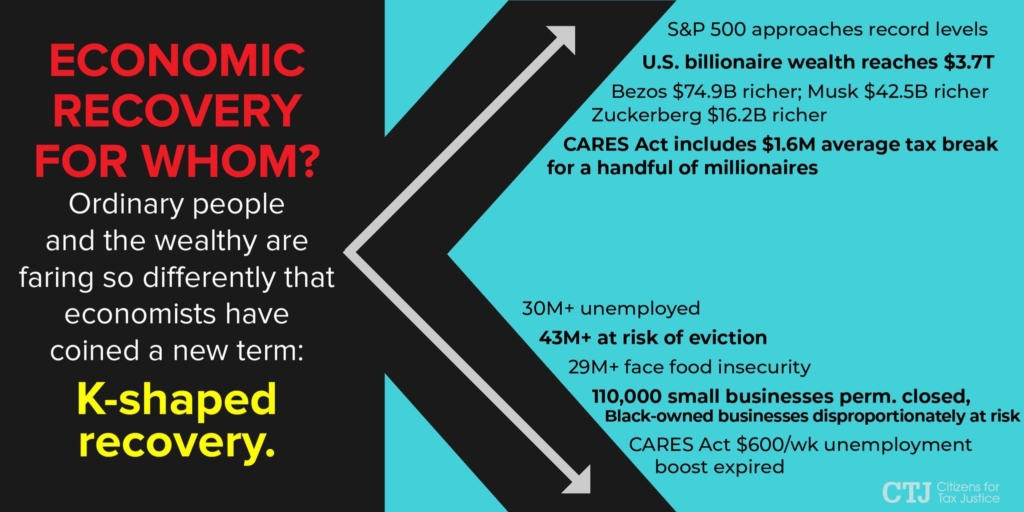
Stock market and home values have soared to record levels while hourly workers and small businesses remain stuck in economic mud. Economists call what’s happening a K-shaped recovery with an uneven impact on different income levels that could stunt overall recovery and justify another round of federal financial relief.
A V-shaped recovery, the best case scenario exiting a recession, is characterized by quick, sustained and across-the-board recovery in economic performance. A K-shaped recovery describes an economic rebound that is robust for some and a bust for others. Underperforming segments, such as lower-wage workers and small businesses, can constrain a consumer-fueled economy and retard the rebound from a pandemic-ravaged recession.
“The stock market isn’t the economy. The economy is production and jobs, and there are shortfalls in virtually every sector of the economy,” former Fed Chair Janet Yellen said in an interview with The Washington Post. “This pandemic is causing suffering and losses. Individuals and businesses are not going to make it through this unless they get grants, and only the federal government can do that.”
At the same time home values have climbed to record levels, pre-pandemic employment levels for workers earning $14 or less per hour is down 20 percent. “The recession is nearly over for high-wage workers, but low-wage workers are no more than half-recovered,” said John Friedman, an economics professor who led a labor data analysis for Opportunity Insights.
“This pandemic is causing suffering and losses. Individuals and businesses are not going to make it through this unless they get grants, and only the federal government can do that.”
That analysis shows recovery has been uneven for whites and people of color. White men have recovered 40 percent of the jobs they lost because of the pandemic and white women have recovered 45 percent. Black men and women have a job recovery rate closer to 20 percent. Sluggish recovery among hourly workers stokes fears about evictions because of a lack of money to pay rent or mortgages. Those fears are amplified for black and Latino households. Trying to make ends meet also leads to food insecurity for families.
An uneven recovery between “haves and have-nots” also is plaguing Great Britain. “I can’t quite think of any recession that has had such a big difference on people’s incomes,” says UK chief economist at Capital Economics Paul Dales. “Some people are sitting there with piles of cash in the bank and others will be wondering how they are going to buy food. The aggregate picture disguises a massive difference.”
President Trump has touted the economic recovery and at the same time a significant number of Senate Republicans have refused to vote for an extension of enhanced unemployment compensation or further aid to small businesses, which has led to a congressional stalemate on another round of federal stimulus relief.
The stock market has regained most of what it lost during the pandemic-induced lockdown, but that can be attributed at least in part to the $2.3 trillion the Federal Reserve Bank has pumped into the US economy, with even more fiscal stimulus possible. Low interest rates have fueled a rush to refinance mortgages and encourage new home purchases, which has buoyed home prices.




